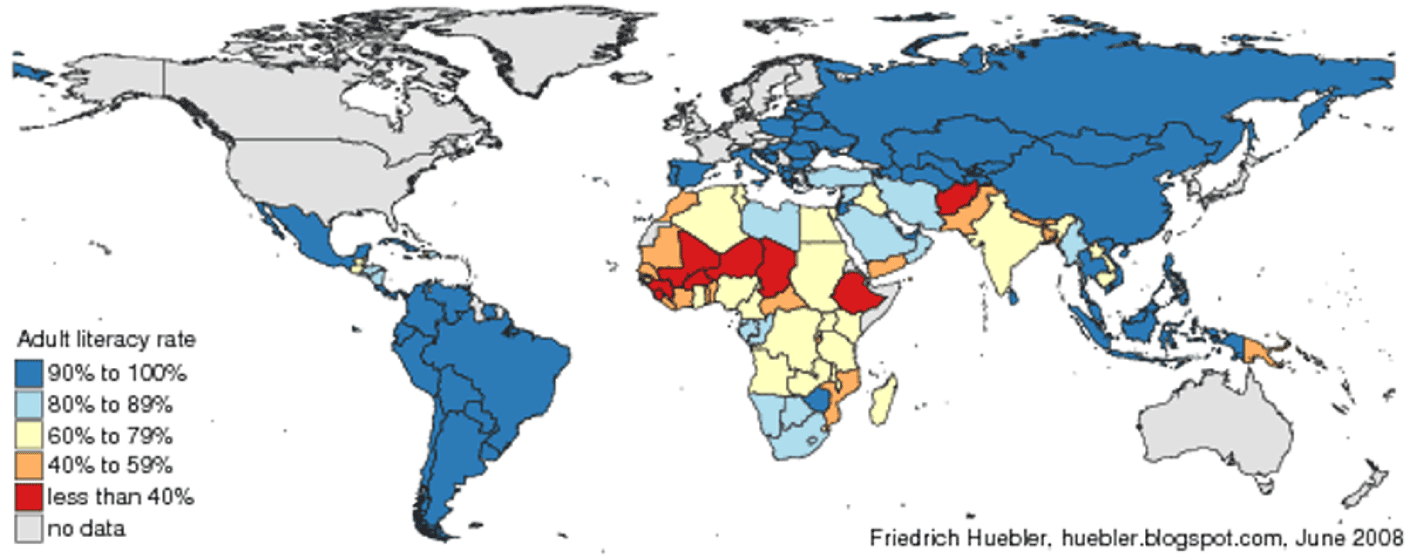What is the United States adult literacy rate in relationship to other nations?
Why is this question important? A primary goal of the American public education system has traditionally been the cultivation of literacy. This goal is especially important for enabling Americans to compete successfully for jobs in the international market place. It is therefore logical that we establish adult literacy as a critical benchmark that will allow us to know when we are succeeding in meeting this goal and that we track this benchmark in relationship to nations throughout the globe.
See further discussion below.

Source(s): UNESCO Institute for Statistics (UIS), May 2008 http://www.uis.unesco.org/ev_en.php?ID=6401_201&ID2=DO_TOPIC
Result(s): Data for 208 countries and territories is available in the UNESCO database. The adult literacy rate was submitted to UNESCO for only 145 countries. The literacy data from 2007 is available for 115 nations. The literacy rate ranges from 99.8% in Cuba to a low of 23.6% in Burkina Faso. The highest rates are in Asia (east and southeast), Europe (east and south), and Latin America. All these regions have literacy rates above 80%. Other areas of high literacy are in western European countries as well as the United States, Canada, and Australia, but this information is missing as they are among the 71 countries whose data was not submitted to UNESCO.
Implication(s): The obvious implication is that the United States does not make available adult literacy information for review. It is important that we begin to track adult literacy to ensure that the United States has workers who can effectively compete in the international marketplace. The erosion of many of America's high-paying jobs over the past 30 years makes it imperative that the workforce possess the basic skills to attract higher-paying jobs capable of maintaining the American middle class.
Author(s): The United Nations Institute of Statistics. The UNESCO Institute for Statistics is the statistical branch of the United Nations Educational, Scientific, and Cultural Organization (UNESCO). It was established in July 1999 in order to reform UNESCO's statistical capacities. The data display used for this report was developed by Friedrich Huebler in an independent report of UNESCO's data titled International Education Statistics (http://huebler.blogspot.com/).
Publisher(s): United Nations Institute of Statistics
Study Description: UNESCO Institute for Statistics (UIS) was established in July 1999. It provides reliable statistics in the fields of education, science and technology, culture, and communication to the United Nations and member nations. The UNESCO Institute for Statistics is hosted by the University of Montreal in Canada.
The UIS education database is the most comprehensive in the world. More than 200 countries and territories take part in the UIS annual education survey, which covers all education levels and a range of issues such as gender parity, teachers, and financing. UIS has the mandate to monitor progress toward Education for All and education-related United Nations educational goals. The statistics are updated twice a year.
Definition(s): Adult literacy rate: The percentage of the population age 15 years and above who can read and write.
